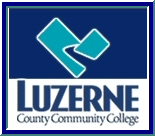|
Organizational Methods:
CONCLUSIONS
- The way you conclude your paper is determined by the
organizational approach you use to develop it.
- As indicated in the section on introductions, your introduction
can either conclude with a statement of the thesis (deductive
approach) or with a pivotal question (inductive approach).
- How you write your introduction affects how you write your
conclusion.
(1) DEDUCTIVE Approach
- If you end your introduction with a statement of the thesis, you
need to conclude your composition in one of two ways:
- Concluding Statement: If you believe
that your thesis is within the reader's experience, that the
body of the composition is developed without burdensome
explanations, and that the overall tone is informal, you can
simply write at the end of the last paragraph a concluding
statement which restates you thesis.
- Concluding Paragraph: If your thesis is
more challenging in that it is not within your reader's
experience and requires many in-depth developmental paragraphs
to be properly substantiated, you should provide a concluding
paragraph. In it, summarize the main ideas in the topic
sentences of your developmental paragraphs and provide a
concluding statement which restates the main idea housed in the
thesis statement.
- Suppose that you are writing deductively with the thesis
statement, "A vacation on Martha's Vineyard Island can be an
exhilarating experience" appearing at the end of your introductory
paragraph. You can be reasonably sure that your reader has traveled
to popular vacation spots, even though the reader might not have
vacationed at Martha's Vineyard. Because of the informal nature of
this thesis, the body of the composition should not be lengthy or
burdensome. Therefore, a concluding statement at the end of the last
paragraph in the body of the composition will suffice to conclude
the paper. The concluding statement might be as follows:
- "So, if you plan to travel this summer,
Martha's Vineyard Island offers a unique vacation experience."
- On the other hand, suppose that the thesis of a deductively
organized composition is, "Building a modular home involves unique
construction concepts." The tone of this thesis is more formal and
the nature of the idea is perhaps not within the experience of most
readers. Also, the body of the composition will be more involved
with the need for many developmental paragraphs. In this case, you
should conclude the composition with a summary paragraph which
reviews the main ideas located in the topic sentences of the
developmental paragraphs. A concluding statement should be developed
that restates the thesis. This concluding statement might read as
follows:
- "The consumer must evaluate all options
in determining whether to build a modular home."
(2) INDUCTIVE Approach
- If you end your introductory paragraph with a pivotal question,
the thesis statement will appear at the end of the composition and
answer that question.
- The thesis can be placed at the end of the last developmental
paragraph if the tone of the composition is informal and the number
of developmental paragraphs is minimal.
- On the other hand, if the composition has a more formal
tone and is developed by a number of involved supporting paragraphs,
the thesis will appear at the end of a separate paragraph which you
will create to summarize the main ideas in your paper.
- Although most compositions are written deductively, at times a
thesis statement can be better presented at the end of the
composition to create a desired effect, or to logically respond to a
pivotal question presented in the introductory paragraph. You should
recognize the opportunity to diversify your organizational methods,
and at least occasionally, utilize the inductive approach.
 
     

© 2010
Luzerne County
Community College makes this Web site available
to members of the community
for educational purposes, but it does not necessarily endorse the
items published here.
|